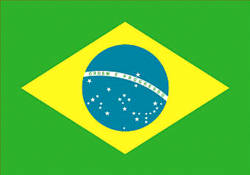The use of a technique adjunctive to acupuncture, to turn breech babies, has been investigated by researchers at Thames Valley University.
The technique, known as moxibustion, involves the burning of a herb to gently warm an acupuncture point on the little toe. Moxa for breech presentation has been routinely practised by acupuncturists for centuries. In China, mothers with a breech baby practise this in their own homes, whereas in the UK, mothers who are aware of the technique, will consult a private acupuncturist.
This study enrolled 76 women who had presented at private acupuncture practices across the UK, and who were between the 32nd and 38th week of pregnancy. Acupuncturists instructed the women in the use of a standardised procedure to undertake at home daily for seven days.
Of the 62 women on whom full data was available at the end of the study, 44.7% experienced a turning of their baby. Best results seemed to be obtained when the treatment was administered in the afternoon. The authors conclude that moxibustion can bring about spontaneous version from breech to cephalic presentation, and can therefore provide this group of women with an option for a vaginal birth.
(Management of Breech Presentation with the use of Moxibustion in Women in the UK. The European Journal of Oriental Medicine Vol 6 no1.)

 Researchers in Brazil have shown that acupuncture may help relieve indigestion in pregnancy. Forty-two pregnant women aged 15 to 39, and with dyspepsia, were randomly allocated to receive either acupuncture or standard care. Acupuncture was given once a week, or twice if the symptoms were severe, for an eight week period. The acupuncture group exhibited significant improvements, and also used less medication. The authors conclude that dyspepsia in pregnancy is a very common problem. The use of medication is always a concern. Acupuncture, as was demonstrated in this study, seems to be an effective means of reducing the symptoms and improving quality of life.
Researchers in Brazil have shown that acupuncture may help relieve indigestion in pregnancy. Forty-two pregnant women aged 15 to 39, and with dyspepsia, were randomly allocated to receive either acupuncture or standard care. Acupuncture was given once a week, or twice if the symptoms were severe, for an eight week period. The acupuncture group exhibited significant improvements, and also used less medication. The authors conclude that dyspepsia in pregnancy is a very common problem. The use of medication is always a concern. Acupuncture, as was demonstrated in this study, seems to be an effective means of reducing the symptoms and improving quality of life. Researchers at Queen’s University and the University of Alberta in Canada, have investigated the effectiveness of acupuncture for assisting in the initiation and duration of labour.
Researchers at Queen’s University and the University of Alberta in Canada, have investigated the effectiveness of acupuncture for assisting in the initiation and duration of labour.